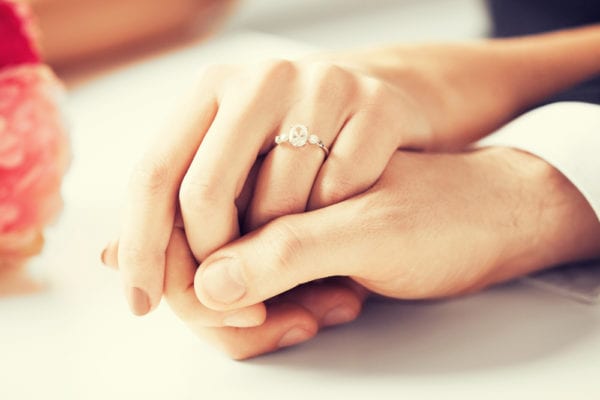‘Diamonds are forever’: symbolism and the engagement ring
‘Diamonds are forever’: symbolism and the engagement ring
‘Diamonds are forever’: symbolism and the engagement ring
-
Hannah
-
Hannah


On the British high street, a store called Poundland specialises in selling all manner of items for just £1. Usually, those items are mundane – cleaning cloths, for example, and envelopes. But last week the media thoroughly enjoyed sharing the newest product line in the Poundland range: engagement rings.
As the Guardian reports, ‘They’re being sold as fun placeholders – so the couple can then choose together’. This, we’re told, ‘feels more in line with modern romance. A survey of 1,000 women by the jewellers Beaverbrooks in 2017 found that 10% couldn’t stand their engagement rings, and a quarter of men now cautiously propose without one at all.’
Is the cheap placeholder ring part of a new chapter in the history of the engagement ring?
It was the Romans who first began the custom of a bride-to-be receiving a ring from her fiancé. The circular shape of the ring represented an eternal cycle, and the fourth finger of the left hand on which the ring was worn was believed to contain a vein that ran directly to the heart. Many fiancées had two rings, one of gold, to wear out and about, and one of iron, to wear around the home.
The ring did not necessarily represent love, though. When a man slid the ring on a woman’s finger, he could just as easily have been signalling, ‘I own you; you are mine.’
While some Ancient Greeks adopted the engagement ring, the custom did not spread widely and become entrenched. Only when Archduke Maximilian of Austria, the future Holy Roman Emperor Maximilian I, became engaged to Mary of Burgundy in 1477 did an engagement ring pique people’s interest – because Maximilian’s was beautiful: a gold band set with diamonds in the shape of an ‘M’. Suddenly, overt expressions of one’s wealth in the form of a ring were en vogue in the upper classes. Anyone who was not fabulously wealthy would have to make do with a simple band, at best.
Still, engagement rings were not an integral part of the engagement and marriage customs until the twentieth century, when along came the diamond corporation De Beers. When they began marketing, in the late 1930s, engagement rings were not widely popular with the younger generation, and they set about changing that. Hollywood icons strolled around bedecked in diamonds. De Beers campaigns informed the public that engagement rings were not optional, but essential symbols of commitment and love, and that they simply must feature a diamond – or many. ‘Diamonds are forever,’ they famously declared. Effective marketing indeed!
It was De Beers, too, who came up with the idea that the man should spend two months’ salary on the ring. Most people simply believe a ring should be chosen (by the fiancé or, more and more, the fiancée) to suit the bride, rather than for its price tag. But just as Maximilian’s ring inspired flashy creations for those who could afford them back in the fifteenth century, some modern engagement rings are worth a considerable amount of money. Take, for example, the Lesotho III ring given to Jackie Kennedy upon her engagement to Aristotle Onassis. The 40.42 carat diamond was so valuable, Jackie only wore the ring twice before it was locked away in a bank vault for safekeeping. Perhaps Jackie would have enjoyed a less valuable ring that she could wear without concern.
Of all the rings worn historically, my favourite is the posy ring, which was exchanged by lovers from the fifteenth to seventeenth centuries. This was a ring that truly represented love (not ownership; not a vision of diamonds sold to us by a corporation). The rings were simple gold bands inscribed with love quotations – on the inside, so that the words were private between the couple.
The following rings are from the British Museum’s collection. The inscription on the left reads: Two hands, one heart, Till death us part. Beautiful, don’t you think?

Source: British Museum Collection, AF.1409